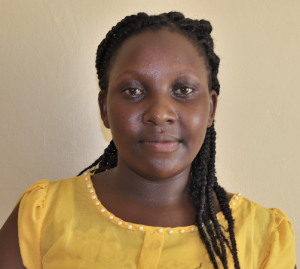The roads leading to Nangurunya village are weathered and take time to undergo maintenance, hence making the journey here bumpy. The area receives adequate rainfall favoring the growth of different types of crops like maize and sugarcane which make the area quite green. Community members here are peasant farmers who grow different types of crops on a small scale mainly for consumption. But, in the instance that they have surpluses, they take them for sale or exchange it for what one does not have with their neighbors. The National Grid power line that runs from Jinja in Uganda to the capital city of Nairobi in Kenya passes through this area, making it unique.
In Nangurunya it is mostly during the dry season of the year when community members face a water crisis. During these periods, each community member has to adjust their daily schedule in order to meet the day's targets. Women and children have to wake up very early earch morning, around 6:00 am, to go and fetch water for drinking and for household chores.
For 140 people in Nangurunya, they depend on unprotected Robert Musali Spring year-round, and especially during the dry season. The spring is known for its year-round reliability, but, unfortunately, also for its poor state. The water is exposed to agents of contamination, leaving community members prone to waterborne and water-related diseases after consuming the spring's water.
The spring water is typically cloudy because it is fetched or accessed by so many community members using different types of scooping containers throughout the day. Some who come to fetch water are children who do not scoop with care, hence contaminating water even further with extra mud and sand. Fetching water from this water point is very tiresome and hectic because one has to take time scooping the water little by little to avoid dirtying it while others wait and queue.
"We waste a lot of our precious time when fetching water here and children like me are given last priority to fetch water when elder ones are also queueing for water because they think we might make the water dirtier in the process of scooping," said young Abel.
"Currently, a lot of community members rely on this sole water source after all shallow wells in the area dried up. So, you have to wake up very early in the morning to avoid long queues but surprisingly you may wake up that very early only to find out others have already been at the water point. So there is no other option than remaining in queue," explained Agnes Khuyanga, who works as a teacher in the area.
Time lost at the spring each day delays adults' work and activity schedules and makes children late for school. When people contract waterborne diseases from drinking the spring's contaminated water, they lose more time as they try to recover while draining their financial resources paying for medicine.
What We Can Do:
Spring Protection
Protecting the spring will help provide access to cleaner and safer water and reduce the time people have to spend to fetch it. Construction will keep surface runoff and other contaminants out of the water. With the community’s high involvement in the process, there should be a good sense of responsibility and ownership for the new clean water source.
Fetching water is a task predominantly carried out by women and young girls. Protecting the spring and offering training and support will, therefore, help empower the female members of the community by freeing up more of their time and energy to engage and invest in income-generating activities and their education.
Training on Health, Hygiene, COVID-19, and More
To hold trainings during the pandemic, we work closely with both community leaders and the local government to approve small groups to attend training. We ask community leaders to invite a select yet representative group of people to attend training who will then act as ambassadors to the rest of the community to share what they learn. We also communicate our expectations of physical distancing and wearing masks for all who choose to attend.
The training will focus on improved hygiene, health, and sanitation habits in this community. We will also have a dedicated session on COVID-19 symptoms, transmission routes, and prevention best practices.
With the community’s input, we will identify key leverage points where they can alter their practices at the personal, household, and community levels to affect change. This training will help to ensure participants have the knowledge they need about healthy practices and their importance to make the most of their water point as soon as water is flowing.
Our team of facilitators will use a variety of methods to train community members. Some of these methods include participatory hygiene and sanitation transformation, asset-based community development, group discussions, handouts, and demonstrations at the spring.
One of the most important issues we plan to cover is the handling, storage, and treatment of water. Having a clean water source will be extremely helpful, but it is useless if water gets contaminated by the time it is consumed. We and the community strongly believe that all of these components will work together to improve living standards here, which will help to unlock the potential for these community members to live better, healthier lives.
We will then conduct a small series of follow-up trainings before transitioning to our regularly scheduled support visits throughout the year.
Training will result in the formation of a water user committee, elected by their peers, that will oversee the operations and maintenance of the spring. The committee will enforce proper behavior around the spring and delegate tasks that will help preserve the site, such as building a fence and digging proper drainage channels. The fence will keep out destructive animals and unwanted waste, and the drainage will keep the area’s mosquito population at a minimum.

 Protected Spring
Protected Spring
 Rehabilitation Project
Rehabilitation Project





































